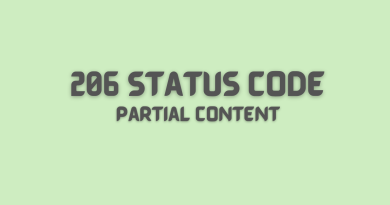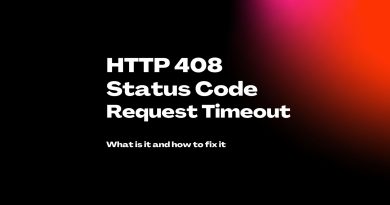HTTP 508 Loop Detected: A Comprehensive Guide To Fix It
The HTTP 508 Loop Detected is a common issue faced by users of the web. It can be extremely frustrating and difficult to fix without guidance, making it an obstacle for many people trying to access their desired website or information. This guide looks into what causes this problem and provides comprehensive advice on how to solve it quickly and easily.
This article examines everything from the basics of the issue, such as recognizing its symptoms and identifying possible sources, to more advanced fixes like modifying system settings or disabling certain functionalities. We will also look at some additional steps that may need to be taken in order to resolve the error once it has been identified. By following these instructions, readers should be able to get back up and running with minimal disruption.
What Is The Error 508 Loop Detected?
The HTTP 508 loop detected error is a type of resource limit and status code encountered when attempting to access certain web pages or elements. It indicates that an entire operation failed due to too much resource usage, often resulting in an infinite loop within the WordPress site. This HTTP status code serves as a warning sign that something has gone wrong and needs to be addressed immediately. The purpose of this guide is to explain what HTTP 508 Loop Detected means, its causes, and how it can be fixed.
Causes Of Http 508 Error
HTTP 508 errors occur when a web server is unable to complete a request due to resource limits. This causes the entire operation of the website or directory tree to be terminated prematurely, resulting in an HTTP status code of 508. Common causes include issues with your hosting provider, such as inadequate memory allocated for processing requests on their servers, or too many connections trying to access the same resources at once. Additionally, if you have recently added new rules or directives to your .htaccess file and it has not been properly configured can also lead to this error message appearing. In cases where no cause can be identified, it is likely that there are underlying problems with the web host’s infrastructure which may require further investigation.
The next step is understanding how to address these common root causes of http 508 errors so they can be avoided in the future.
How To Fix 508 Loop Detected
The HTTP 508 Loop Detected error is a serious issue that should be resolved quickly. To do this, it’s important to understand the cause and how to best address them. In order for servers to detect when such an error occurs, they must use web-distributed authoring (WebDAV) requests with a depth of infinity in order to determine if there are any more resources available that can be requested. When no more resources exist, the server may enter into such a situation where it continues looping on itself until finally returning a 508 status code.
Fortunately, there are several steps you can take to fix the issue:
- Check Your Codebase: The first thing you should do is check your codebase for any potential issues or conflicts causing the infinite loop. This could include typos within loops as well as improper configuration settings.
- Optimize WebDAV Requests: Another common solution is optimizing your WebDAV requests by ensuring they have a set limit so they don’t continue running forever and trigger the 508 loop detected error.
- Re-Enable Resources: If some of your resources were disabled at one point due to bug fixes or other maintenance tasks, re-enabling them can resolve the issue since it will prevent further attempts from being made once all resources have been collected.
In addressing these solutions, website owners and developers may find success in fixing their 508 Loop Detected errors swiftly and effectively. Transitioning now to similar HTTP Status codes – – can help website owners to better understand the different types of errors and how to address them.
Similar Http Status Codes To 508 Loop Detected
HTTP status codes are the numerical values that indicate a specific response from the server, and each code has its own meaning. The 508 loop detected error is one of many different HTTP status codes, which generally occur when there’s an issue with the request being made. Here we explore some similar types of errors to help you understand them better:
| Code | Meaning | Response |
|---|---|---|
| 503 | Service Unavailable | Retry-after |
| 504 | Gateway Timeout | Retry/refresh |
| 400 | Bad Request | Return Error |
| 401 | Unauthorized | Authorization required |
The 503 service unavailable error occurs when the web server cannot handle the requests due to overload or maintenance. In this case, it should respond with a ‘Retry-After’ header, so that clients can wait for a certain amount of time before retrying their request. The 504 gateway timeout happens when the server takes too long to receive a response from another source and fails to send back a response in time. In such cases, users should either try refreshing the page or retry after waiting for some time. 400 bad requests usually mean that the syntax of your URL was incorrect; thus, users must fix any typos in their URLs before trying again. Finally, if you’re receiving an unauthorized (401) response, then authorization is needed for access – check whether credentials were provided correctly or not.
All HTTP status codes by categories
Informational responses
(100 – 199)



